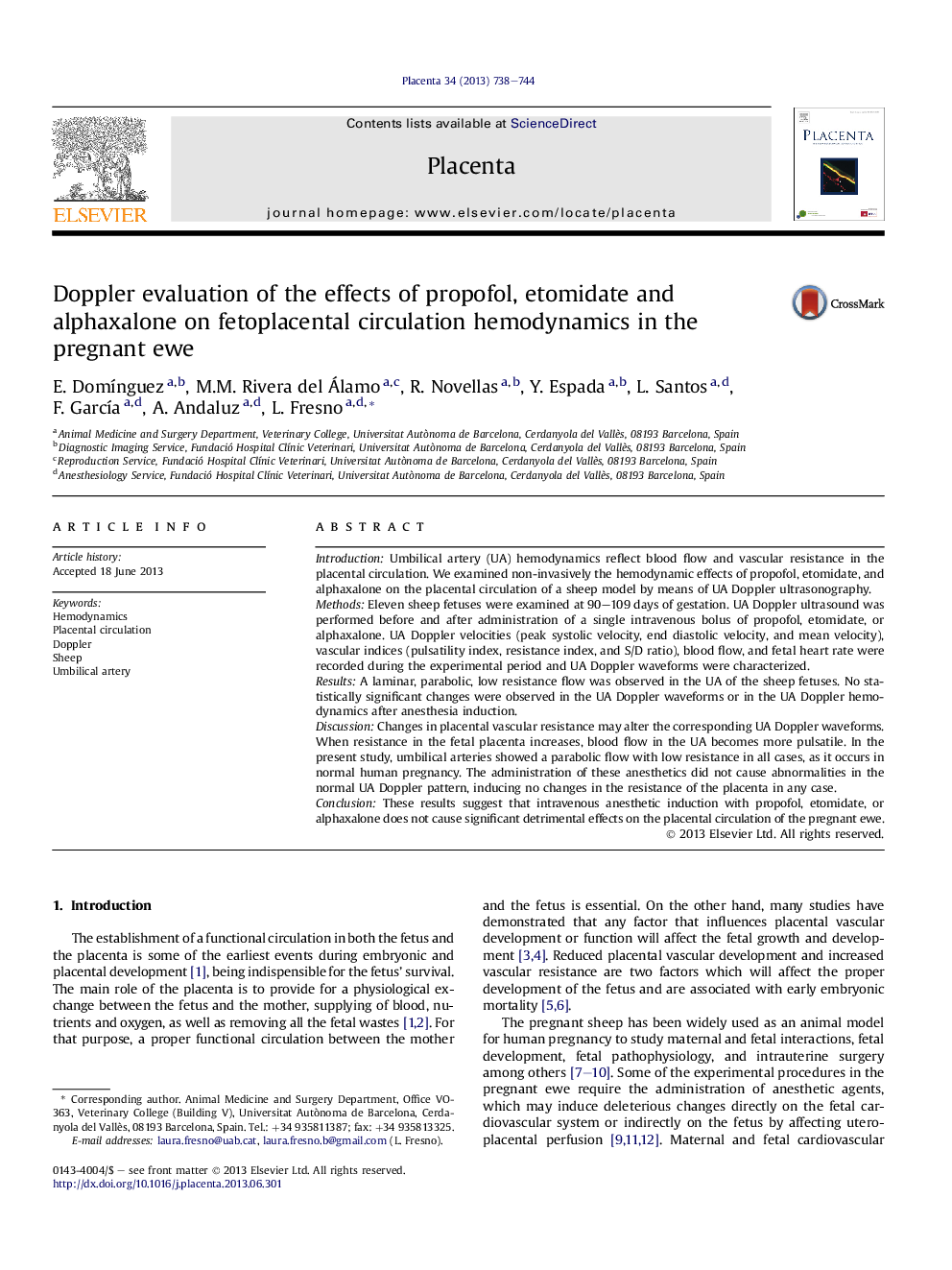| Article ID | Journal | Published Year | Pages | File Type |
|---|---|---|---|---|
| 2788856 | Placenta | 2013 | 7 Pages |
IntroductionUmbilical artery (UA) hemodynamics reflect blood flow and vascular resistance in the placental circulation. We examined non-invasively the hemodynamic effects of propofol, etomidate, and alphaxalone on the placental circulation of a sheep model by means of UA Doppler ultrasonography.MethodsEleven sheep fetuses were examined at 90–109 days of gestation. UA Doppler ultrasound was performed before and after administration of a single intravenous bolus of propofol, etomidate, or alphaxalone. UA Doppler velocities (peak systolic velocity, end diastolic velocity, and mean velocity), vascular indices (pulsatility index, resistance index, and S/D ratio), blood flow, and fetal heart rate were recorded during the experimental period and UA Doppler waveforms were characterized.ResultsA laminar, parabolic, low resistance flow was observed in the UA of the sheep fetuses. No statistically significant changes were observed in the UA Doppler waveforms or in the UA Doppler hemodynamics after anesthesia induction.DiscussionChanges in placental vascular resistance may alter the corresponding UA Doppler waveforms. When resistance in the fetal placenta increases, blood flow in the UA becomes more pulsatile. In the present study, umbilical arteries showed a parabolic flow with low resistance in all cases, as it occurs in normal human pregnancy. The administration of these anesthetics did not cause abnormalities in the normal UA Doppler pattern, inducing no changes in the resistance of the placenta in any case.ConclusionThese results suggest that intravenous anesthetic induction with propofol, etomidate, or alphaxalone does not cause significant detrimental effects on the placental circulation of the pregnant ewe.
